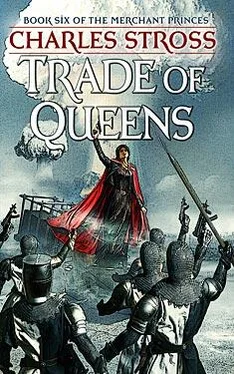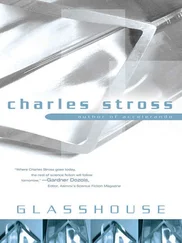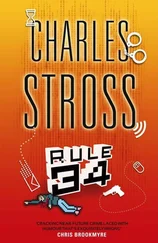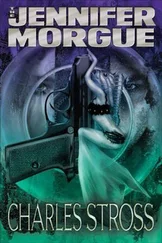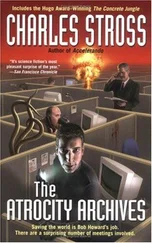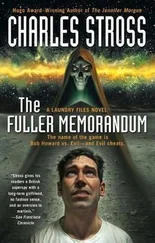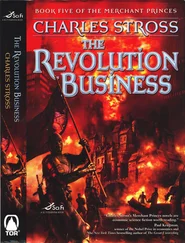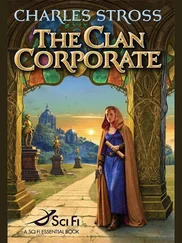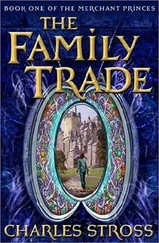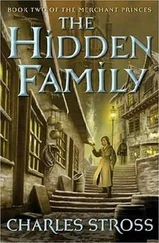Charles Stross - MP 6 -The Trade of Queens
Здесь есть возможность читать онлайн «Charles Stross - MP 6 -The Trade of Queens» весь текст электронной книги совершенно бесплатно (целиком полную версию без сокращений). В некоторых случаях можно слушать аудио, скачать через торрент в формате fb2 и присутствует краткое содержание. Жанр: Старинная литература, на английском языке. Описание произведения, (предисловие) а так же отзывы посетителей доступны на портале библиотеки ЛибКат.
- Название:MP 6 -The Trade of Queens
- Автор:
- Жанр:
- Год:неизвестен
- ISBN:нет данных
- Рейтинг книги:4 / 5. Голосов: 1
-
Избранное:Добавить в избранное
- Отзывы:
-
Ваша оценка:
- 80
- 1
- 2
- 3
- 4
- 5
MP 6 -The Trade of Queens: краткое содержание, описание и аннотация
Предлагаем к чтению аннотацию, описание, краткое содержание или предисловие (зависит от того, что написал сам автор книги «MP 6 -The Trade of Queens»). Если вы не нашли необходимую информацию о книге — напишите в комментариях, мы постараемся отыскать её.
MP 6 -The Trade of Queens — читать онлайн бесплатно полную книгу (весь текст) целиком
Ниже представлен текст книги, разбитый по страницам. Система сохранения места последней прочитанной страницы, позволяет с удобством читать онлайн бесплатно книгу «MP 6 -The Trade of Queens», без необходимости каждый раз заново искать на чём Вы остановились. Поставьте закладку, и сможете в любой момент перейти на страницу, на которой закончили чтение.
Интервал:
Закладка:
Because nobody had visited the room, nobody had called a locksmith. And because the door remained locked, nobody had noticed the presence of an abandoned janitor's trolley, its cylindrical plastic trash can weighted down by something heavy. Nor had anyone, in an attempt to move the trolley, discovered that its wheels were jammed as thoroughly as the lock on the door. And nobody had raised the lid on the trash can and, staring inside, recognized the olive-drab cylinder for what it was: a SADMstorable atomic demolition munition—in its field carrier, connected to a live detonation sequencer (its cover similarly glued shut), a very long way indeed from its designated storage cell in a bunker at the Pantex plant in West Texas.
The janitor's store was approximately 450 meters—two blocks—away from Lafayette Square and, opposite it, the White House; and it was about ten meters above the roofline of that building.
The detonation sequencer was, at heart, little more than a countdown timer—a milspec timer, with a set of thumbwheels to enter the permissive action codes, and more thumbwheels to enter the countdown time and desired yield. Beneath the glued-down cover were additional test and fault lights and switches. From the timer emerged a fat cable that screwed onto a multi-pin socket on the outside of the bomb carrier. Inside the carrier nestled one of the smallest atomic bombs ever assembled, so compact that a strong man with a suitable backpack frame could actually carry it. But not for much longer.
Eleven-sixteen and twelve seconds, on the morning of July 16, 2003.
Stop all the clocks. All of them.
It was a regular summer day in Washington, D.C. Open-topped tourist buses carried their camera-snapping cargo around the sights on Capitol Hill—itself something of a misnomer, for the gentle slope of the Mall was anything but mountainous—past the reflecting pool, the Washington Monument, the museums and administrative buildings and white stone–clad porticoes of power. In hundreds of offices, stores, restaurants, and businesses around the center ordinary people were at work.
Like Nazma Hussein, aged twenty-six, daughter of Yemeni immigrants, married to Ali the cook, cleaning and setting out tables in the front of her family's small lunch diner on K Street NW, worrying about her younger sister Ayesha who is having trouble at school: Papa wants her to come and work in the restaurant until he and Baba can find her a suitable husband, but Nazma thinks she can do better—
Like Ryan Baylor, aged twenty-three, a law student at GWU, hurrying along H Street to get to the Burns Law Library and swearing quietly under his breath—overslept, forgot to set his alarm, got a reading list as long as his arm and a hangover beating a brazen kettledrum counterpoint to the traffic noise as he wonders if those cans of Coors were really a good idea the evening before a test—
Like Ashanda Roe, aged twenty-eight, working a dead-end shelf-stacking job in a 7-Eleven on D Street NW, sweating as she tears open boxes of Depends and shoves them into position on an end galley, tossing the packaging into a rattly cage and whistling under her breath. She's worrying because her son Darrick, who is only seven, is spending too much time with a bunch of no-good kids who hang out with—
Six thousand, two hundred and eighty-six other people, ordinary people, men and women and children, tourists and natives, illegal immigrants and blue bloods, homeless vagrants and ambassadors—
Stop all the clocks.
In the grand scheme of things, in the recondite world of nuclear war planning, a one-kiloton atomic bomb doesn't sound like much. It's less than a tenth the yield of the weapon that leveled the heart of Hiroshima, a two-hundredth the power of a single warhead from a Minuteman or Trident missile. But the destructive force of a nuclear weapon doesn't correspond directly to its nominal yield; a bomb with ten times the explosive power doesn't cause ten times as much destruction as a smaller one.
Oliver Hjorth's first bomb detonated at twelve seconds past eleven-sixteen, on the ninth floor of a steel-framed concrete department store about a third of a mile from the White House.
Within a hundredth of a second, the department store building and everything else on its block vanished (along with fifty-seven staff and one hundred and fourteen shoppers), swallowed by a white-hot sphere of superheated gas and molten dust. The department store's neighbors, out to a radius of a block, survived a fraction of a second longer, their stone and concrete facades scorching and beginning to smoke, until the expanding shock wave, air compressed and flash-heated to thousands of degrees, rammed into them like a runaway train.
Beyond the immediate neighborhood, the shock wave dissipated rapidly, reflecting off concrete and asphalt and thundering skywards in a bellowing roar that would, a little over a minute later, be audible in Baltimore. And beyond a couple of blocks' radius, only the most unlucky bystanders—those standing where they were caught with a direct line of sight down Seventeenth Street or H Street—would be exposed to the heat pulse, their skin charring and their eyes burned out by the flash.
But within a third of a mile, the destruction was horrendous.
Nazma Hussein saw a flash out of the corner of her eye, like a reflection from the noonday sun, only more brilliant. Looking up, she glanced at the window: But it was nothing, and she looked back at the table she was laying out cutlery on, and deposited another fork on the place mat just as the shock wave arrived to throw a thousand glittering plate-glass knives through her face and abdomen.
Ryan saw a flash on the ground in front of him, and winced, closing his eyes as a wave of prickly heat washed over the back of his head and neck. He inhaled, his nostrils flaring. Flashes sparkled inside his eyelids as he smelled burning hair. His scalp ablaze, he drew breath to scream at the excruciating pain. But then the wind caught him with one hand, and the law library building with another, and clapped them together. And that was all he knew. A small mercy: He would not live to suffer the slow death of a thousand REMs that he had been exposed to, or the fourth-degree burns from the heat flash.
Ashanda was lucky. Working in the back of the store, she saw no flash of light, but heard a roar like a truck piling into the front of the building. The ground shook as the lights failed, and she fell to the floor, screaming in alarm. The rumbling went on for much too long, and she closed her eyes and prayed that it wasn't an earthquake; but who in D.C. had ever imagined an earthquake striking here? As the vibration faded, she pulled herself to her knees, then up to her feet. People were moaning in the front of the shop, but without lights she might as well be blind. She began to fumble her way back to the stockroom door, still shaky, praying that Darrick was all right.
The White House, although originally built in the late eighteenth century, had been reconstructed in the mid-twentieth around a steel load-bearing frame. With stone walls and a steel skeleton, it was by no means as fragile as its age might suggest; but the Truman-era structure wasn't designed to withstand a nuclear blast at close range, and in time of war the president was supposed to be elsewhere.
The White House survived the heat flash, but the shock wave took barely a second to surge down the street. By the time it hit the West Wing it was traveling at just over three hundred miles per hour, with an overpressure slightly over six pounds per square inch—funneled by the broad boulevard—and the force of a tornado.
BOY WONDER, the forty-third president of the United States, was chatting informally with his deputy chief of staff and special assistant (whose windowless office in the middle of the first floor of the West Wing was perhaps the most eavesdropper-proof location in the entire federal government) when the shock wave hit.
Читать дальшеИнтервал:
Закладка:
Похожие книги на «MP 6 -The Trade of Queens»
Представляем Вашему вниманию похожие книги на «MP 6 -The Trade of Queens» списком для выбора. Мы отобрали схожую по названию и смыслу литературу в надежде предоставить читателям больше вариантов отыскать новые, интересные, ещё непрочитанные произведения.
Обсуждение, отзывы о книге «MP 6 -The Trade of Queens» и просто собственные мнения читателей. Оставьте ваши комментарии, напишите, что Вы думаете о произведении, его смысле или главных героях. Укажите что конкретно понравилось, а что нет, и почему Вы так считаете.
